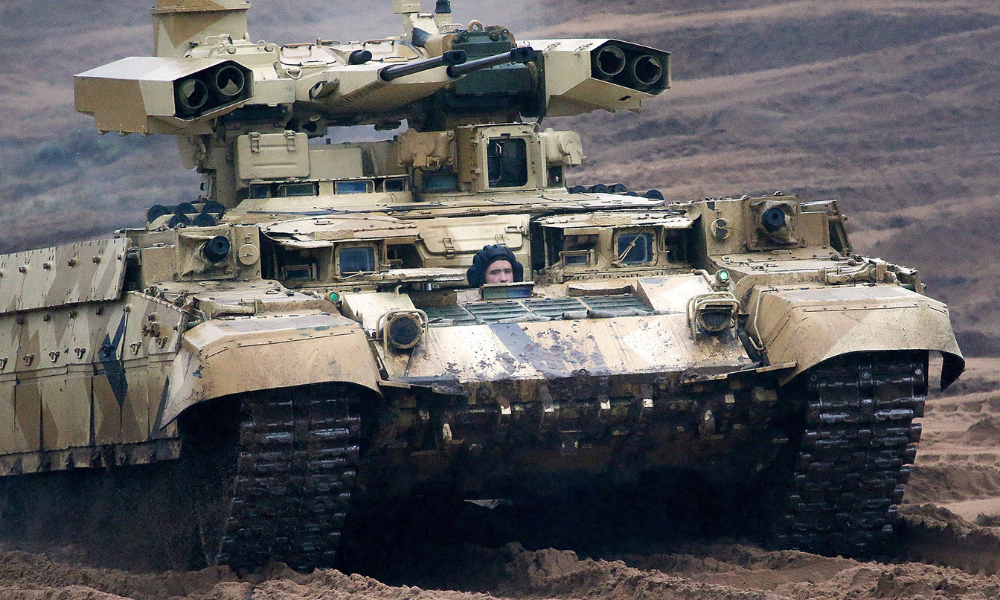
Western countries are rushing heavy weaponry to Ukraine as the war enters what promises to be a deadly, and potentially protracted, new phase.
Those deliveries are coming amid increasingly desperate pleas from Ukrainian battlefield commanders as they endure withering Russian artillery and rocket fire that could last weeks or months.
Over the past two weeks, the Biden administration began shipping out $1.2 billion worth of howitzers, around 200,000 artillery rounds, armored vehicles, counter-battery radars, and experimental new armed drones capable of flying into targets.
The deliveries are a significant advance from the small arms and Javelin anti-tank armor shipments that dominated the first eight weeks of fighting, and which helped stave off Russian thrusts toward the capital of Kyiv in the early days of the invasion.
On Friday, France and Canada unveiled new plans to send long-range artillery systems for the first time, and the U.K. is looking to backfill heavy armor to Poland as Warsaw contemplates sending Polish tanks to Ukraine.
On Sunday, during a surprise trip to Kyiv by Secretary of State Antony Blinken and Defense Secretary Lloyd Austin, the U.S. announced more than $300 million in foreign military financing to allow Ukraine to purchase more sophisticated weapons, along with an additional $165 million for ammunition.
The rapid shift in aid reflects the recognition that the new fight will likely be dominated by artillery barrages and tank battles as infantry units square off over the flat fields of eastern Ukraine. But getting these new weapons to the front quickly will prove critical in the coming days.
As the war changes its character, a wave of Russian steel has been taking aim at Ukrainian units holding the line north of the besieged city of Mariupol, where a few hundred troops continue to make a last desperate stand on the grounds of the Azovstal steel plant.
Eighty miles north of the city, First Lt. Ivan Skuratovsky, serving in the 25th Airborne Brigade, told POLITICO that help needs to come immediately.
“The situation is very bad, [Russian forces] are using scorched-earth tactics,” the 31-year-old married father of two said via text. “They simply destroy everything with artillery, shelling day and night,” he said via text.
He fears that if reinforcements in the form of manpower and heavy weaponry — particularly air support — don’t arrive in the next few days, his troops could find themselves in the same position as those in Mariupol.
Skuratovsky described his soldiers’ situation as “very desperate.”
“I don’t know how much strength we will have,” he said, adding that the troops under his command around the city of Avdiivka, near Donetsk, have gone without rest since the start of the war. At least 13 of them have been wounded in recent weeks, he said, and they are running dangerously low on ammunition, reduced to rationing bullets.
The day before, he told POLITICO his soldiers were being bombarded with Russian howitzers, mortars, and multiple-launch rocket systems “at the same time.” Just hours earlier, he said, they had been attacked by two Su-25 warplanes, “and our day became hell.”
Skuratovsky had a message for the United States and other NATO countries: “I would like to tell them that grenade launchers are good, but against airstrikes and heavy artillery we will not be able to hold out for long. People can no longer endure daily bombardments. We need air support now. We need drones.”
The lieutenant’s pleas match those of President Volodymyr Zelenskyy, who has for weeks demanded that Western countries step up their support as this new phase of the Russian war gets underway.
The calls come as the Kremlin struggles to switch tactics from small unit attacks in the north in favor of devastating artillery barrages aimed at flattening towns and Ukrainian positions, unconcerned with — or perhaps purposefully looking for — civilian casualties.
The message is getting through to Western leaders, albeit slowly.
Ukrainian officials have been calling for heavy weapons and jet fighters since the Feb. 24 Russian invasion, but the Kremlin’s decision to pull its troops from around the capital of Kyiv and make one concerted push in the east and south has clearly caught the attention of Western powers.
Russian forces appear to be positioning for a pincer movement launched from the north and south that would trap at least 30,000 Ukrainian troops in the east, and possibly cut them off from resupply.
Hot Topics
Could Bonds Rally With Inflation High And The Fed Raising Rates?
EU Officials Considered Bitcoin Trading Ban To Enforce Proposed Mining Ban
Bitcoin Suisse Adopts Decentralized Liquity As Lending Product
As of now, weapons and aid are getting through, but as this new, more destructive phase of the Russian assault begins, counterattacking from a distance will likely be key to Ukrainian success. Source: Politico